Welcome to Dunhelen’s Design Guidelines
Welcome, these design guidelines are here to help you construct a well-designed home and submit your home design for approval. Use the links below to complete your application or browse our design requirements for homes at Dunhelen using the menu on the left. You can also download a PDF copy of the design guidelines below.
Submit Application
Click to complete your design submission for approval. This link will take you to the design assessment form on Design Assessment Panel (DAP) Application Portal.
View Application Status
Once your design submission is complete, view the progress of your application by logging into the Design Assessment Panel (DAP) Application Portal.
Download Design Guidelines
Download a PDF copy of the design requirements for homes at Dunhelen.
View Lot Details
Access information and technical documents for your lot. This will help you plan your future home.
Process
The plans for all new buildings and outdoor works must be approved by the Design Assessment Panel (DAP) before applying for a Building Permit or starting construction.
Step 1: Purchase Your Land
Once you’ve purchased your preferred lot from Jinding, you can view all the relevant documentation you and your builder will need to build your new home via the Dunhelen Buyers Portal.
Step 2: Design Your Home
Your builder will work with you to design your home to comply with the Dunhelen Design Guidelines. Your architect, builder and / or designer will also need to take into consideration the Building Envelope Plan and Plan of Subdivision. You should also ensure that you have complied with any applicable building codes, council by-laws and other local authority requirements.
Step 3: Submit Your Plans for Approval
When you are ready to make your submission to the DAP, you can lodge your house plans, colour schedules and landscape plans via the Dunhelen Buyers Portal, portal.dunhelengreenvale.com.au. There will be a link on the Buyers Portal that will take you to the DAP assessment form. Usually, the designer or builder you are using will submit the plans of your house and garden for design approval. You will be notified when the approval is granted. The submission should be in PDF form and contain all the required information detailed in the checklist. Generally, your design will be reviewed within 10 working days of your initial submission, provided that all documents are submitted correctly. In some cases, plans may need to be resubmitted. Specific feedback on your design will be provided to help facilitate approval if this occurs. If resubmission is required, for ease of processing please ensure that any alterations are highlighted. Once your design is assessed and approved, you and your builder will be issued with a stamped, approved set of plans.
Step 4: Building Permit Application by Your Builder
Once you’ve received your design approval, a Building Permit must be obtained from either the City of Hume or a licensed building surveyor. Your registered building surveyor will require your home design to comply with any legal or statutory requirements on the Plan of Subdivision and will require evidence of your DAP approval. If any further design modifications are made, you will be required to resubmit plans to the DAP for reassessment.
Step 5: Construction
Once received, a Building Permit allows you to commence construction. In accordance with the Contract of Sale, construction of your home must commence within 6 months of settlement of your lot. Completion of your house, garage, driveway, crossover and retaining walls, should occur within 12 months of construction beginning. During the construction period, construction must not be paused for more than 3 months in total.
Step 6: Certificate of Occupancy
The Certificate of Occupancy certifies that a home can be lived in. Your builder will typically look after this on your behalf. After receiving the Certificate of Occupancy, any fencing must be constructed in accordance with these guidelines within 3 months, and the landscaping of the front yard completed within 6 months. A note for your builder: all kerb and footpath rectification works must be completed within 3 months of receiving your Certificate of Occupancy. Your driveway must be completed before you move into your new home. We want to ensure that the streetscapes at Dunhelen are well maintained for all residents to enjoy.
Lot Planning
Lot Coverage
If the lot is not a SLHC lot, the built area must cover no more than 60% of the lot’s area.
Note. A covenant on title restricts each land lot to one habitable dwelling unless otherwise agreed by council
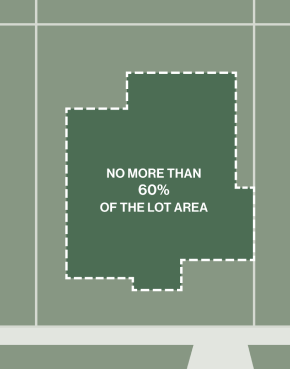
Frontage Width
The total width of the front of the building must occupy at least 70% of the width of the lot at the lot’s front boundary.
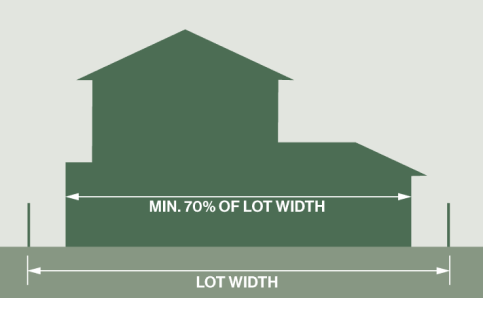
Front Setback
- The house must be set back a minimum of 4.0 m and a maximum of 5.5 m from the lot’s front boundary, except where other distances are specified in the building envelope plan.
Side and Rear Setbacks
- The house must be set back from one of the lot’s side boundaries at least 1.0 m, except where other distances are specified in the building envelope plan. A garage may be built to one side boundary.
- If the lot is on a street corner, the house must be set back at least 1.5 m from the lot boundary beside the secondary street, except where another distance is specified in the building envelope plan.
Garage Setbacks
- The garage must be set back a minimum of 5.5 m from the front boundary of the lot.
- The front wall of the garage must be set back from the front wall of the house at least 500 mm.
- On a corner lot, the garage may face a secondary street, if:
- it is set back from the lot’s side boundary at least 1.5 m; and
- it is further from the street corner than if it were on the primary street.

Use of the Setback Areas
- An open articulating structure on the front façade of the house, such as a verandah, porch, portico or covered balcony, must not extend into the front setback more than 1.5 m.
- An open articulating structure on the front façade of the house must be no higher above ground level than 4.5 m on a single storey house, or 6.6 m on a double storey house.
- Additional features listed below may encroach up to 500 mm into the side and rear setback distances, if not encroaching into any authority easement on the plan of subdivision.
- porches and verandahs;
- eaves, fascia and gutters;
- screens, but only to the extent needed to protect a neighbouring property from a direct view;
- domestic fuel tanks and water tanks;
- heating and cooling equipment, and other services.
Home Style Guide
Style
Houses at Dunhelen may have a versatile mix of contemporary façades of various styles. This will be achieved through well-proportioned façade elements combined with the controlled use of architectural styles, materials and colours selected to ensure a cohesive streetscape and reflect the location.
Period styles such as Edwardian and Georgian, and period detailing such as quoins, fretwork, lacework etc. are generally not permitted. Use of elements from previous styles as part of a contemporary design may be approved by the Design Assessment Panel on architectural merit.
Front Entry Structure
- Each house must incorporate a prominent front entry structure that is readily visible from the primary street frontage and complements the overall design of the house. The front entry structure may take the form of a portico, porch, veranda, or other feature to the satisfaction of the Design Assessment Panel, that has:
- a minimum covered area of 3.0 m2; and
- a minimum depth of 1.5 m.
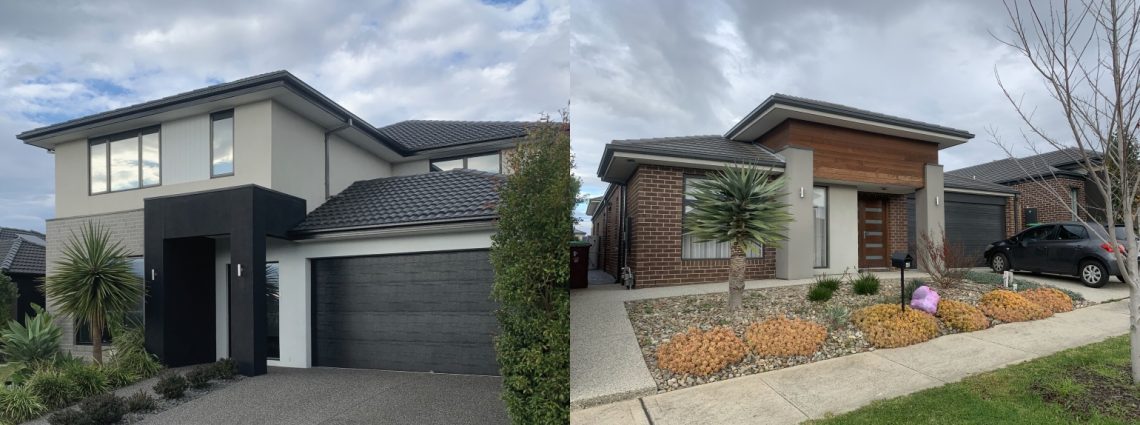
Contemporary
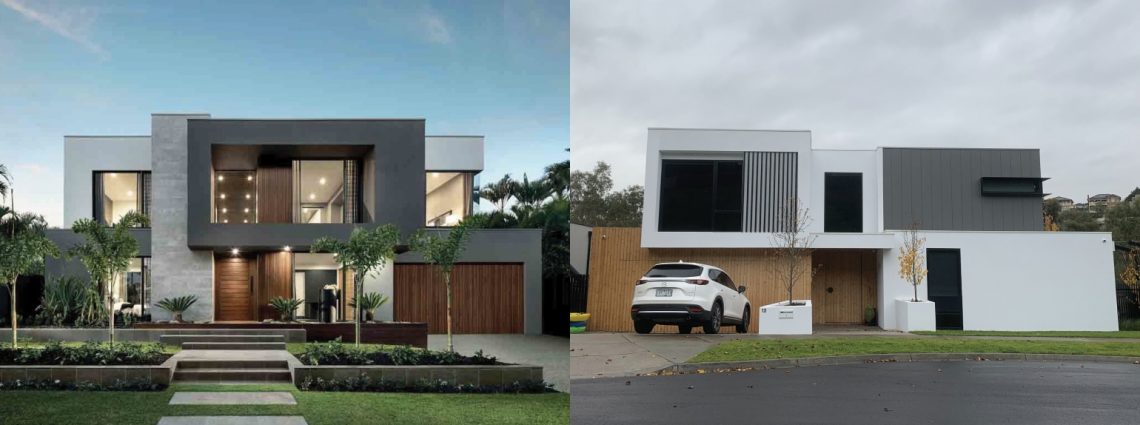
Modern

Traditional
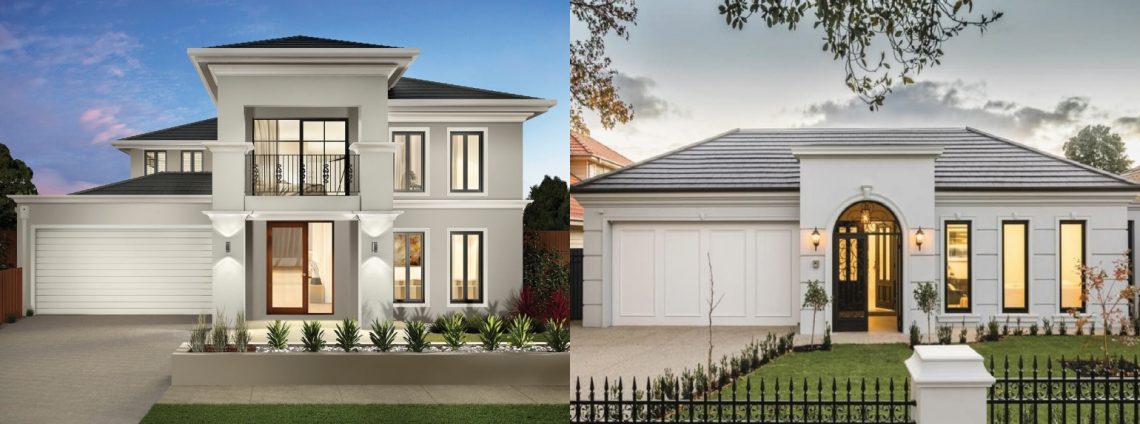
Classical
Façade Articulation
- Every façade facing a street or park must be at least moderately articulated.
- If the house is double storey, the front façade must be articulated with structures such as balconies and gables.
Techniques to Articulate a Façade Include:
- stepping the façade with recessed or projecting areas;
- adding a structure that gives depth to the façade, such as a verandah, bay window, balcony, awning, or sunshade.
Examples of Acceptable Façade Articulation:
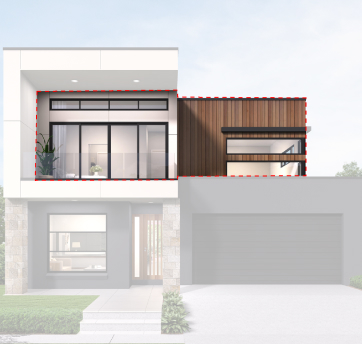
Recessed Element
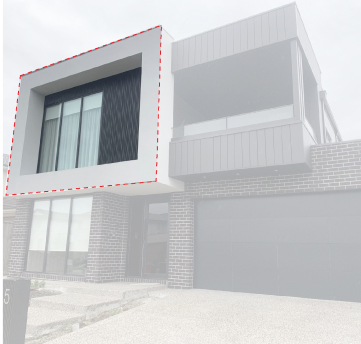
Project Element
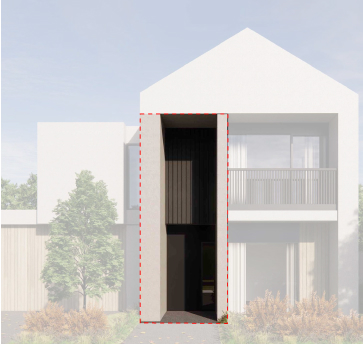
Double Storey Band
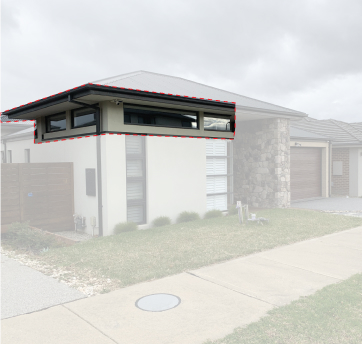
Highlight Windows
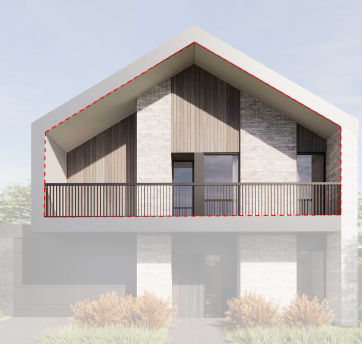
Large Balcony

Varied Skyline
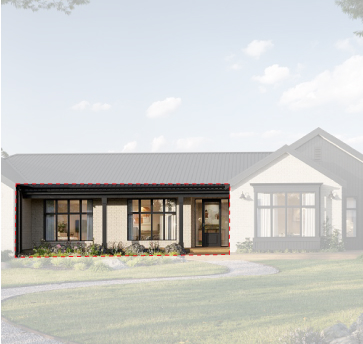
Verandah
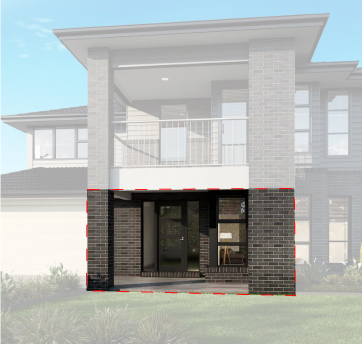
Entry Porch (Deep and Wide)

Arch
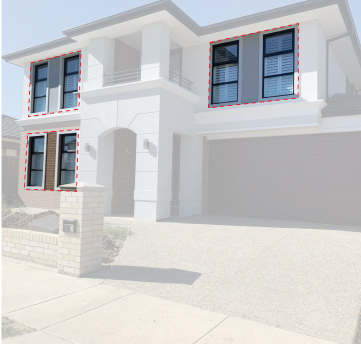
Regular Placement Windows

Horizontal Step
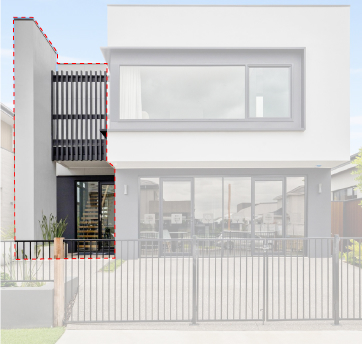
Vertical Step
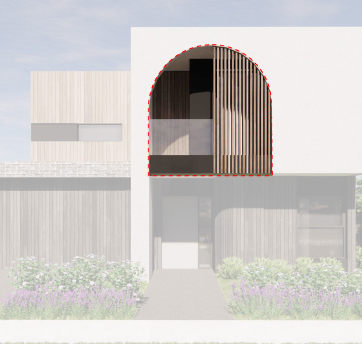
Entry Porch (Open on Two Sides)
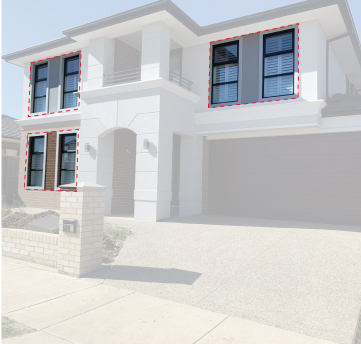
Projected Gable

Downplay Garage

Shadows
Secondary Façade on a Corner Lot
- A house on a corner lot must address the secondary frontage by incorporating the same or similar design features to those used on the primary frontage. This may include:
- windows with matching head heights;
- highlight materials and finishes that wrap around the primary façade;
- pergolas, porticos, porches, verandas, and balconies;
- roof elements such as feature gables;
- other treatments to the satisfaction of the Design Assessment Panel.
- Materials used on the front façade must extend to the secondary frontage for a minimum of 3.0 m.
- Corner features must be forward of the return fence and be readily visible from the public realm. Blank walls forward of the return fence are not permitted.
- If the house is single storey, has a pitched roof and is on a corner lot, eaves must extend along all sides facing the public realm and return along the other sides at least 3.0 m, unless otherwise approved by the Design Assessment Panel.
Distinctive Appearance
- The front façade must not be identical or very similar to the nearest three houses on the lots next door, that is, to the left and right on the same side of the street, and directly opposite.


- Techniques to vary the façade’s appearance include:
- alter the shape of the façade, using wall articulation, roof shape, and by adding features such as gables, verandahs and porches;
- change the roof and wall materials;
- vary the colours of roof materials, wall materials, window frames, window glass and garage doors;
- modify the shape, size and placement of elements such as windows, columns and doors.
Ceiling Height
Rooms fronting the public realm, excluding garages, must have a minimum ground floor ceiling height of 2.7 m.
Other heights may be approved on architectural merit by the Design Assessment Panel.
Prohibited Materials
The following materials are typically prohibited in any area visible to the public:
- glass that is reflective, frosted, coloured, stained, leadlight or patterned;
- removable film on glass;
- unpainted metalwork;
- unpainted cement sheeting;
- infill panels above openings;
- unscreened stumps;
- bright colours on walls and roofs, except if used as a highlight colour on the walls, and only with Design Assessment Panel approval;
- coffered or rectangular relief pattern garage doors;
- roller shutters over windows and doors, if the roller box is visible;
- plain, stamped or stencilled concrete;
- painted driveways;
- gravel driveways;
- shiny or reflective surfaces on driveways;
- letterboxes on a single narrow pole;
- hexagonal or diamond grills on windows or doors;
- historical or ornate style bars on security doors or windows.
Colours
The colour scheme of the house’s exterior must be muted neutral tones. It must have moderate tonal contrast, avoiding being very light, very dark or a strong black and white contrast.
Examples of Acceptable Façade Colours:

Roofs
- A variety of roofing forms and styles is encouraged.
- Articulated roof shapes with elements such as hips, gables, skillions, Dutch gables and/or dormer windows are encouraged.
- Other roof designs may be approved on architectural merit.
- Hip and gable roofs must have a minimum roof pitch of 22.5 degrees; steeper pitches are also encouraged on homes with a narrow frontage.
- The roof must be clad in factory-coated metal sheeting or low profile roof tiles. High profile tiles, such as half-round ones, are prohibited.
- Galvanized, Zincalume or unfinished roof cladding and rainwater fixtures are not permitted.
- Roof cladding must be matte and non-reflective.
- The colour of the roof must complement the colouring of the house.
Examples of Acceptable Roof Materials:

Aluminium Fluted Panel

Slate Tile
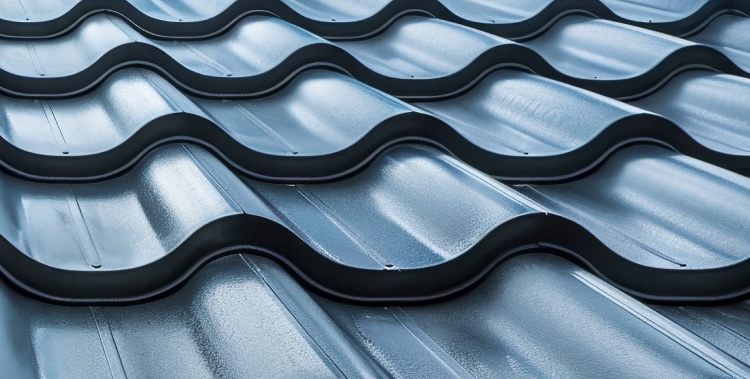
Terracotta Tile

Concrete Tile
Eaves
- Eaves provide shade in the summer months and allow the winter sun to penetrate the home during winter. Greater energy efficiency can generally be achieved by constructing eaves, making the house more sustainable and providing the opportunity for energy savings.
- A pitched roof over a single storey wall must have eaves at least 450 mm deep on all sides of the house that face streets or public open space, and must return along the sides at least 3.0 m.
- A pitched roof over a double storey wall must have eaves at least 450 mm deep on all sides.
- Wall constructed on side boundaries (zero lot line) will be exempt from eave requirements.
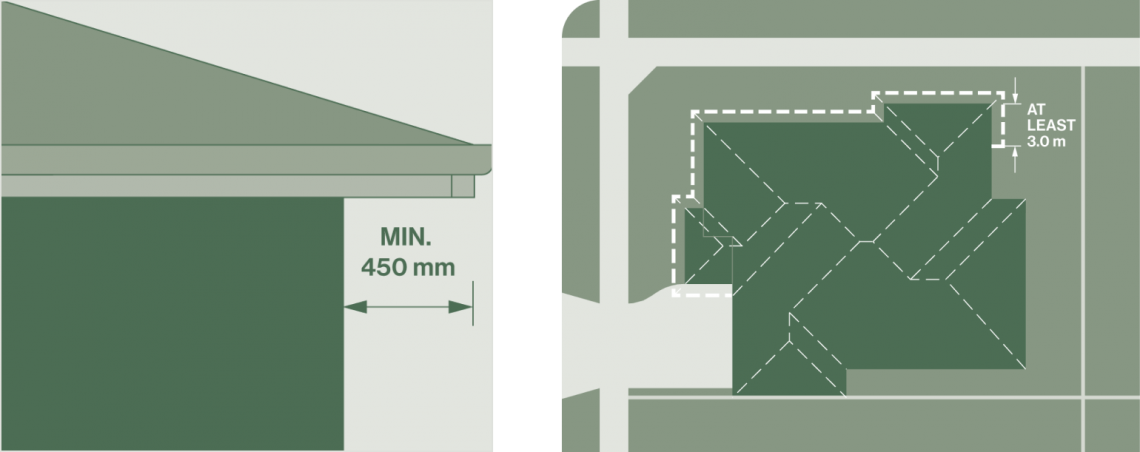
Walls
- The front façade must include at least two and a maximum of four complementary wall materials or colours. The principal material or colour should cover no more than 80% of the front façade, not including the front door, garage door or windows. If only two materials are used, any one material must cover more than 20% of the wall area, and be prominent.
- The external surface of the front façade, and of the side walls for at least 3.0 m behind the front façade, must be made from one or more of the following materials:
- stone;
- masonry blocks;
- weatherboard (painted);
- lightweight cladding;
- timber or timber composite cladding;
- render; or
- other materials that are approved by the Design Assessment Panel.
- Flat metal or cement sheets are prohibited. Other materials may be considered on merit.
- Additional requirements may apply to corner lots.
See section 3.5 for details.
Examples of Acceptable Wall Materials:
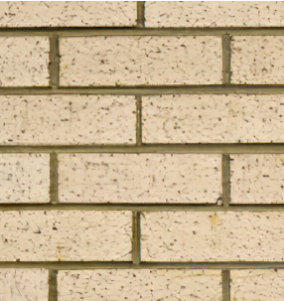
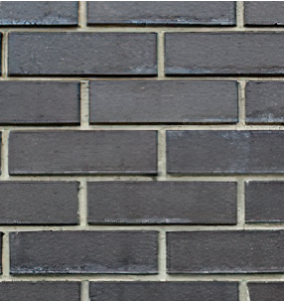
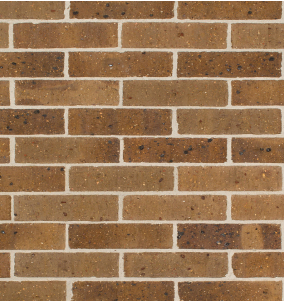
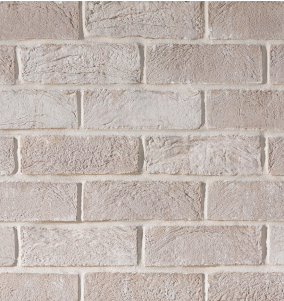

Brickwork


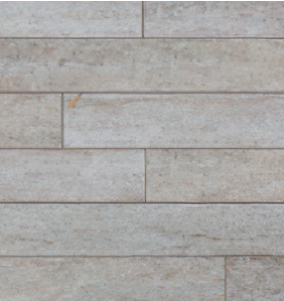
Tiles
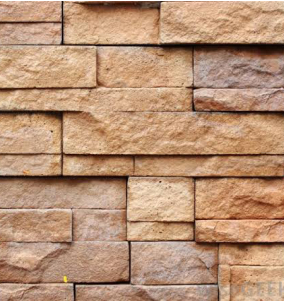
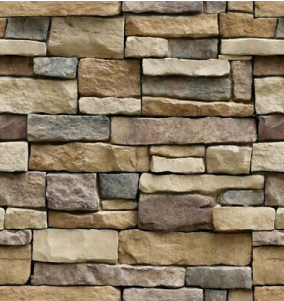
Stacked Stone

Rough Render

Textured Render


Weatherboard
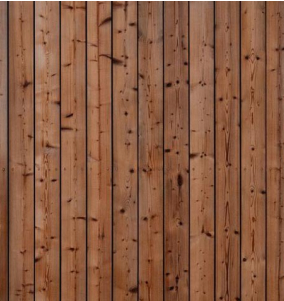
Timber Cladding
Garage & Driveways
Garage
- The garage must be an integral part of the house, not a separate structure.
- The garage must be enclosed. A carport or open-sided garage is not allowed.
- A lot with a frontage of 12.5 m or more must provide a double garage.
- The width of the garage door opening must not exceed 40% of the primary lot frontage.

- If a garage door is visible from the public realm, it must be either a panel lift, sectional overhead, or other similar type. Roller doors are not permitted if they are visible from the public realm.


- The colour of the garage door or doors must complement the front façade.
Examples of Acceptable Garage Door Styles:

Walls
- The front façade must include at least two and a maximum of four complementary wall materials or colours. The principal material or colour should cover no more than 80% of the front façade, not including the front door, garage door or windows. If only two materials are used, any one material must cover more than 20% of the wall area, and be prominent.
- The external surface of the front façade, and of the side walls for at least 3.0 m behind the front façade, must be made from one or more of the following materials:
- stone;
- masonry blocks;
- weatherboard (painted);
- lightweight cladding;
- timber or timber composite cladding;
- render; or
- other materials that are approved by the Design Assessment Panel.
- Flat metal or cement sheets are prohibited. Other materials may be considered on merit.
- Additional requirements may apply to corner lots.
See section 3.5 for details.
Examples of Acceptable Wall Materials:


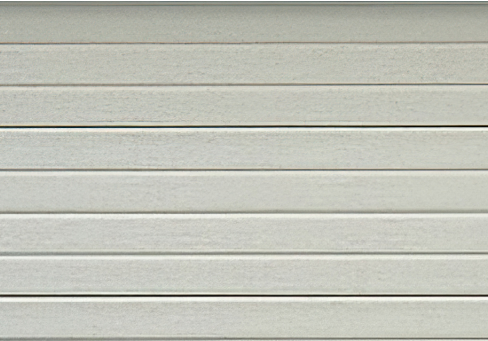
Driveways
- Only one driveway is permitted per allotment.
- At the front boundary of the lot, the driveway must match the width of the crossover.
- The width of the driveway must be no wider than the garage opening.
- The driveway must be constructed from a hard material such as exposed aggregate concrete; coloured-through concrete, slate, natural stone, asphalt, or brick.
- The tone of the driveway must be between RGB 100, 100, 100 and RGB 200, 200, 200 (mid-grey to light grey).
- The driveway’s colour should be muted. Driveways of uncoloured concrete or painted concrete are not permitted.
Garden Bed Beside Driveways
The area between the driveway and the nearest side boundary must be a garden bed at least 500 mm wide.
Outbuildings & Accessories
Outbuildings
- An outbuilding must use materials and colours to complement those used on the main dwelling.
- An outbuilding with a footprint smaller than 10.0 m2 must be inconspicuous from the public realm.
Ancillary Items
- On a lot with one street frontage, ancillary items must be inconspicuous when viewed from the street. Items will be deemed to be inconspicuous if located in the rear 50% of the lot, fully screened, or inside a building.
- On a corner lot, any ancillary items must be inconspicuous when viewed from all adjacent streets. Items will be deemed to be inconspicuous if they are located in the rear 50% of the lot and on the side of the house opposite the secondary street, fully screened, or inside a building.
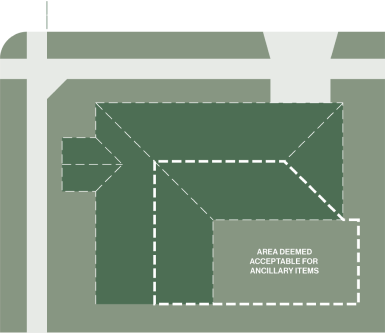
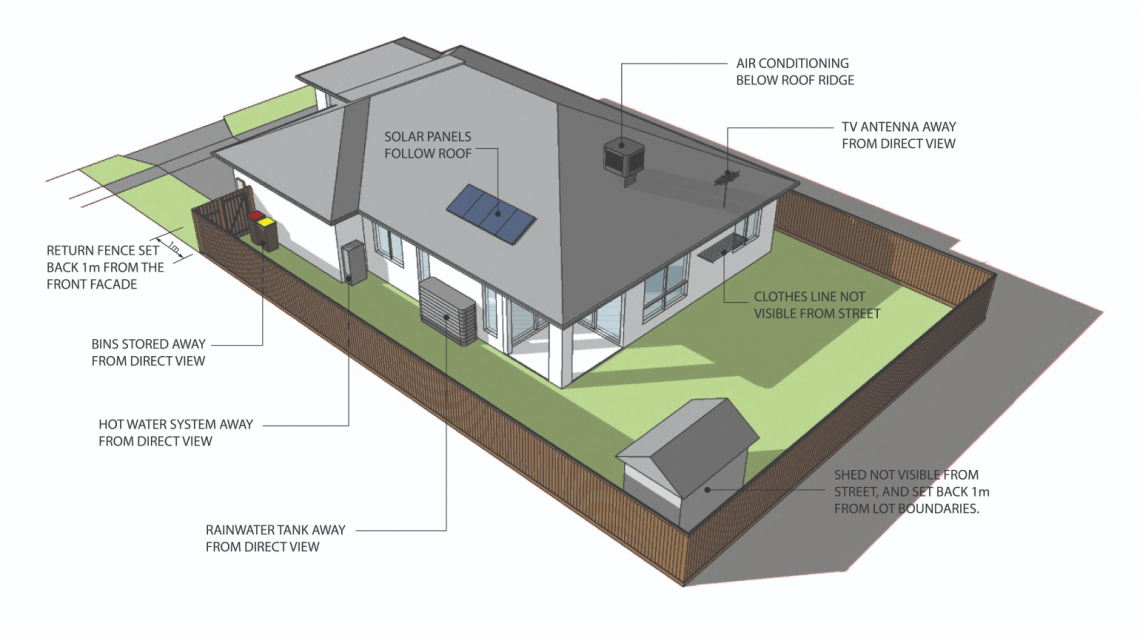
Air Conditioning Units
- An air conditioning unit on the roof must match the colour of the roof, be positioned below the roof ridge line and not be visible from streets or parks.
- An external condenser of a split air conditioning system, and all associated piping and cabling, must be mounted away from public view or be screened.
- Items mounted on a roof, such as solar panels, or items protruding through it, such as vents, must not be on a roof plane facing a street, or on a gable roof within 10.0 m of the front façade.
Outdoor Spaces
Landscaping of the Front Yard
Trees, shrubs and groundcovers ornament front yards and provide visual interest.
In selecting plants, please allow enough space for their branches and roots to spread as they grow. Also keep in mind the ability of roots to invade pipes and lift paving, and leaves to fill gutters.
Ancillary Items
- On a lot with one street frontage, ancillary items must be inconspicuous when viewed from the street. Items will be deemed to be inconspicuous if located in the rear 50% of the lot, fully screened, or inside a building.
- On a corner lot, any ancillary items must be inconspicuous when viewed from all adjacent streets. Items will be deemed to be inconspicuous if they are located in the rear 50% of the lot and on the side of the house opposite the secondary street, fully screened, or inside a building.
Free Architecturally Designed Landscape Packages
At Dunhelen, Jinding is offering tailored front landscaping packages with four bespoke designs to choose from. To check your eligibility please refer to your Contract of Sale.
If you are eligible for the front landscaping package, a layout plan will need to be included in your submission with driveway materials, locations, and finishes, fencing line, water connections and water tank locations, letterbox design and location. Once your home construction is complete, visit the Dunhelen Buyers Portal to commence your landscaping consultation process.
If you are not eligible for the front landscaping package or decide to undertake your own landscaping;
- A landscape plan of the front yard must be submitted as part of the application, showing the species of plants to be used, where they are to be planted, the total number of each species, and the size of each plant, either as pot size or trunk diameter.
- At least 20% of the area of the front yard must be garden beds. Beds must be mulched with at least 25 mm depth of bark, other organic material, or stones, and edged with a long-lasting material.
- Plants in garden beds must be planted densely enough to ensure minimal visibility of mulch within two years.
- One small canopy tree is required.

Image taken at Harriott, Armstrong Creek by Jinding
Front Yard Fencing
- Fencing of the front boundary of the lot is prohibited.
- Wing fences (fences on the lot’s side boundaries) in front of the house must be no more than 1200 mm high.
- Wing fences may transition in height to a return fence or building.

Front Yard Fencing
Rear Yard Fencing
- Fencing of the rear yard for privacy must be made of capped timber palings with exposed posts and be no more than 1.8 m high above finished surface level.
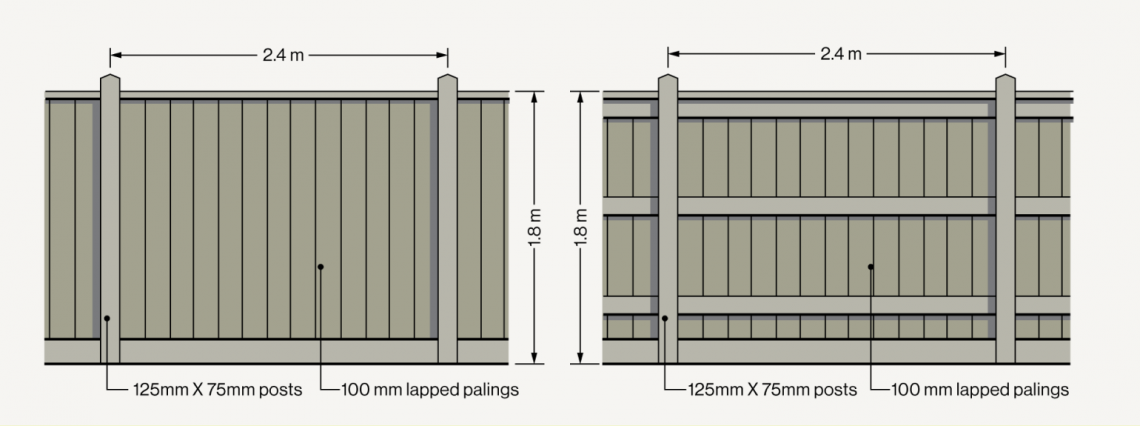
Rear Yard Fencing
- Rear yard fencing must be set back at least 1.0 m from the nearest front corner of the house.
- The maximum combined height of a fence and retaining wall must be no more than 2.0 m.
- A return fence (a fence between the house and the lot’s side boundary) must match the adjoining fence in materials, finishes and height.
- A gate in a fence must match or complement the fence in materials, finishes and height.
- On a corner lot, the side fence next to a secondary street must be set back at least 3.0 m as standard from the front corner of the house.
Access to the Rear Yard
Access must be provided to the rear yard by a gate in the return fence or by a rear door in the garage.
Retaining Walls
Where filled or excavated, soil needs to be retained. Please first consider graded slopes, battering and other landscape treatments. If the level change is more than 1.0 m, use two or more stepped walls with planting beds between the walls.
The extent, height and finish of all proposed retaining walls must be included in any application for Design Approval.
Refer to Council for additional retaining wall requirements. Council approval may be required for retaining walls. Applicants should make their own enquiries.
- The maximum height of any retaining wall is generally 1.0 m.
- A planted garden bed at least 200 mm deep must be created in front of and between retaining walls to soften their appearance.
- Retaining walls visible from the public realm must be constructed from a material and finish to complement the house, to the satisfaction of the Design Assessment Panel. Timber sleepers are not permitted.
Acceptable finishes may include:
- stone;
- face or rendered masonry;
- concrete sleepers with an appropriate applied finish and galvanised support columns.
Letterboxes
- The materials, colours and style of the letterbox must complement the materials, colours and style of the house.
- If manufactured, note the make and model on the plans. If constructed, show dimension, materials and any necessary details on the plans.
- A letterbox on a single post will not be approved.
Below are some example letterboxes. These can be purchased at your local hardware store, Milkcan, Handy Box, and Letterboxes Direct.
Examples of Acceptable Letterbox Styles:

Pillar Letterboxes

Fence and Wire Inserts
A Community for Every Generation
Environmental Sustainability
A. Liveability Considerations
Applicants are encouraged to submit designs that are environmentally responsible. The orientation of your lot will determine the best siting of the house on the lot. A building’s orientation plays a large part in achieving the optimum solar access for your home during winter. Lots on the north side of a street will have sunny backyards – good for private outdoor living. Lots on the south side of a street will have sunny front yards – good for show piece gardens. Lots facing east-west will have sunny side yards – these houses should be sited to leave the largest possible outdoor living space along the northern boundary.
Dwellings can become more liveable by considering the orientation of rooms and windows, shading of windows and walls, ceiling heights, sustainable building materials, cross flow ventilation, covered open spaces, insulation and water efficient fixtures. Eave design can act as excellent shading devices during warmer months. Implementing these features can also result into substantial financial savings for the homeowner. Double storey homes must respect the privacy of neighbouring dwellings, including potential overshadowing issues that may arise as a result of siting choices. It is the responsibility of applicants with double storey proposals to ensure their design has demonstrated these factors and to receive approval from the relevant authority and / or building surveyor prior to construction.
B. Solar Heating Panels
Solar Heating Panels can help generate renewable electricity by converting energy from the sun. These are strongly encouraged at Dunhelen because they offer a relatively cost effective way to reduce your outgoing utility bills, while also benefiting the environment.
C. Rainwater Tanks
Rainwater storage is encouraged at Dunhelen and can help reduce your outgoing utility bills, while providing water for your garden. To help calculate the size of water storage that you may require please contact the Department of Sustainability and Environment.
D. Recycled Water
Recycled water will be available for non-drinking purposes such as toilet flushing and garden usage. To reduce consumption of potable water, residents are required to connect all toilets and two garden taps (front and rear) to the recycled water system.
E. Energy Ratings
It is the applicants’ responsibility when building a home to comply with Victoria’s energy rating requirements. Dwelling designs should be assessed by a licensed energy rating company and they in turn will make recommendations regarding insulation and other resource saving measures. Dwellings must achieve the minimum standard as currently legislated.
Visit sustainability.vic.gov.au to learn more about the sustainable initiatives you can consider in your new home.
Creating Great Neighbours
You and the owners of the lots abutting yours are likely to be neighbours for years. At Dunhelen, we’ve created a community where neighbours can connect and build good relationships at the local parks and walking trails, or even via a friendly conversation over the fence. This guide has been created to help all new residents settle into their new community and to provide some tips to create a space where all feel welcomed.
A. Parking
Most land lots and homes have been designed to accommodate two vehicles. Vehicles are not permitted in your front yard, on footpaths, or on vacant land. Driveways can be used to park cars but are not intended for the long-term storage of boats, caravans, or containers. These are also not permitted to be parked on the street.
B. Gardens
To keep Dunhelen looking great, a landscape design standard has been created.
Front gardens should be kept tidy with your lawn, including verges, kept mown and free of weeds. Garden beds and plants should also be maintained regularly.
C. Waste
Rubbish bins are to be kept behind fences or away from public view, except on the day of rubbish collection. Once your rubbish has been collected, please ensure prompt collection of your bins and that they are once again stored out of public view.
D. Laundry
Clothes drying facilities must be located away from, or screened, from public view.
E. Noise
We’re a community of friends and neighbours. In the interest of positive neighbour relations, please consider those around you and always keep noise to a respectable level.
F. Window Fittings
Homes should be fitted with curtains, blinds, or shutters. Please ensure visually prominent security screens (e.g. diamond grills), or vertical blinds are not installed on doors or windows facing any street frontage.
G. Fencing
Fencing is the responsibility of the property owners. If you share a fence with a neighbour, it’s a good idea to consult them on the cost and timing of any shared boundary fences and retaining walls. That way you can make arrangements that suit both households. Due to privacy laws, Jinding can not disclose purchaser details, but you can request this information from Hume Council. Throughout the construction of your land lots, Jinding will host ‘welcome events’ which are a great opportunity to meet your neighbours. Another alternative, you can agree to pass on your details to your neighbours through the sales team or customer relations, and we can provide your details.
Please contact Customer Relations at customerrelations@jinding.com.au with your best contact details and the lots you wish to get in contact with.
H. Additionally
Any changes that you make on your lot that may impact your neighbour’s land should be discussed with your neighbour first. This includes changes to soil levels on the boundary of the lot. It is also your responsibility to not let increased volumes of stormwater discharge into other lots.
Construction Obligations
Maintaining appealing streetscapes is essential to Dunhelen even during the construction phase. We ask that you consider the following information and ensure your builder is also aware of the expectations so that Dunhelen always presents well and is welcoming to its visitors.
We thank you in advance for your cooperation.
A. Lot Maintenance
While waiting for construction to commence on your land lot, you must not allow any rubbish including site excavations and building materials to accumulate. Please maintain the lot to avoid excessive growth of grass or weeds.
B. Construction
During home construction, no rubbish can accumulate on the lot unless stored in a skip or bin and trade vehicles or delivery vehicles must not park on verges, footpaths, nature strips or park reserves.
Building materials are not permitted to be delivered or stored on the nature strip or anywhere outside the title boundary.
C. Erosion and Sediment Controls
It is important that construction activities do not have an adverse impact on the significant environment and natural features. Your builder will be required to implement appropriate erosion and sediment control measures on your lot to avoid adverse impacts.
D. Council Assets
Please ensure the council land directly surrounding your lot is not damaged during your home construction.
The road, verge and footpath in front of your lot are owned by Hume Council. Services such as water meters, telecommunication boxes and electrical pillars are assets owned by service authorities. These assets cannot be altered without approval from council or the relevant service authority. Council inspects these assets at the completion of construction, when assessing the Certificate of Occupancy to ensure no damage or alteration has occurred. It is the responsibility of the landowner to ensure that any required asset protection permits are obtained prior to the commencement of building works.
The purchaser shall not place any rubbish, including site excavations and building materials, on adjoining land, reserves or any waterways.
Please also protect any street trees, nature strips and kerbs during the building works.
E. Report Illegal Dumping or Damaged Property
To help minimise rubbish on site, if you witness illegal dumping of rubbish, soil, concrete etc, please take a photo and submit a report to the relevant local authority via the Snap, Send, Solve app.
www.snapsendsolve.com
Appendices
Appendices can be found at the end of the PDF version of the Design Guidelines.
Download Design Guidelines
Download a PDF copy of the design requirements for homes at Dunhelen.

